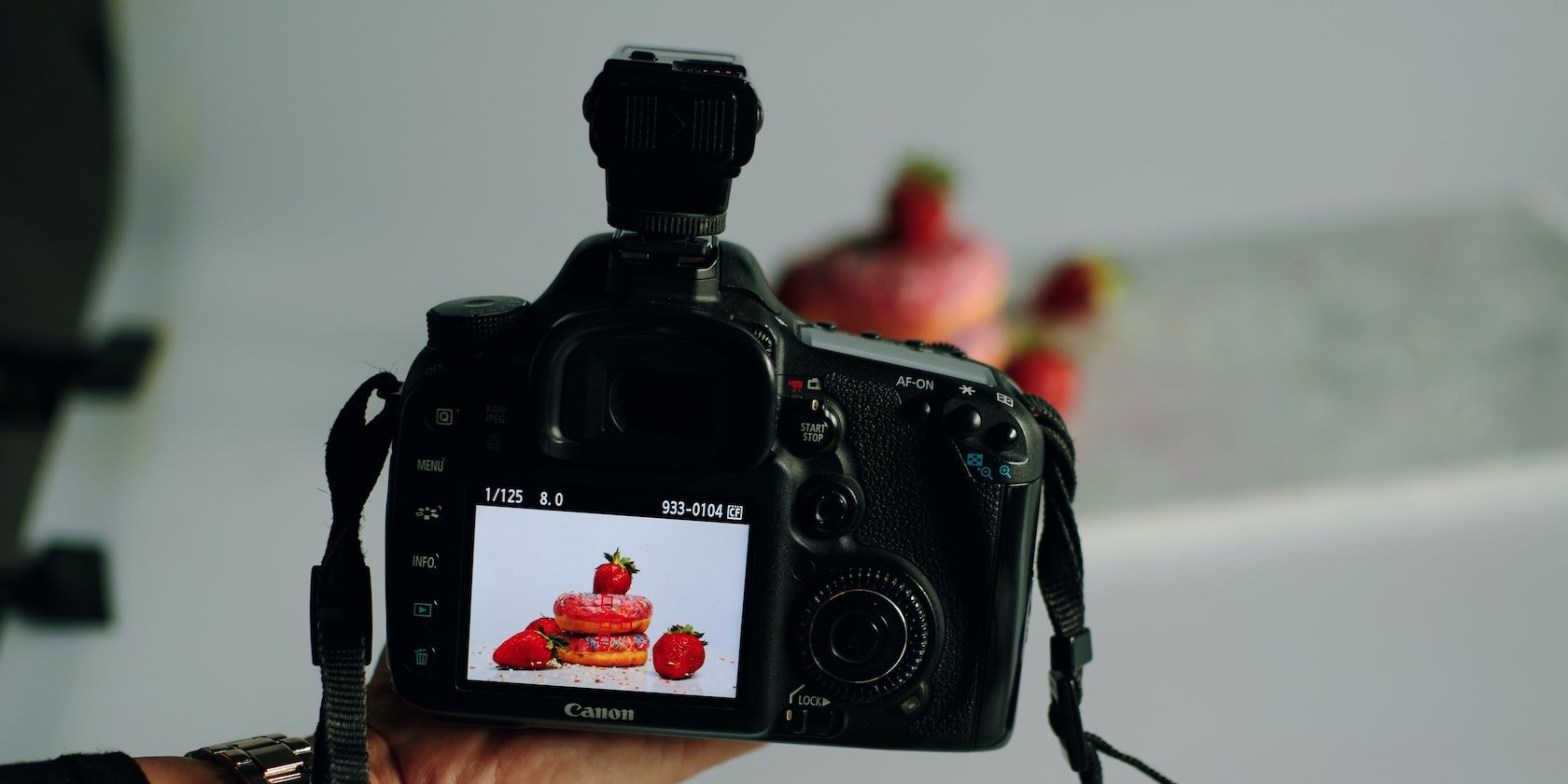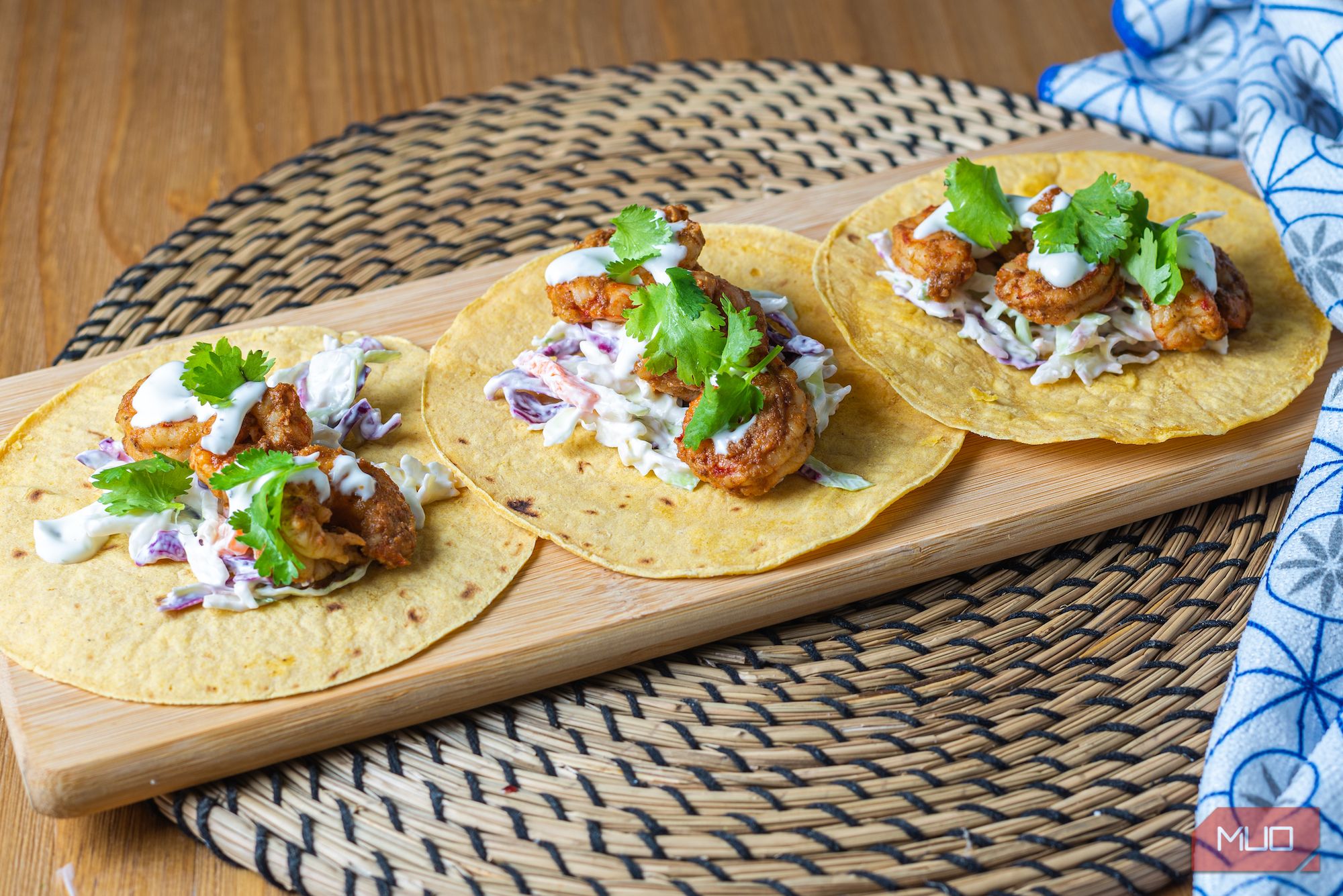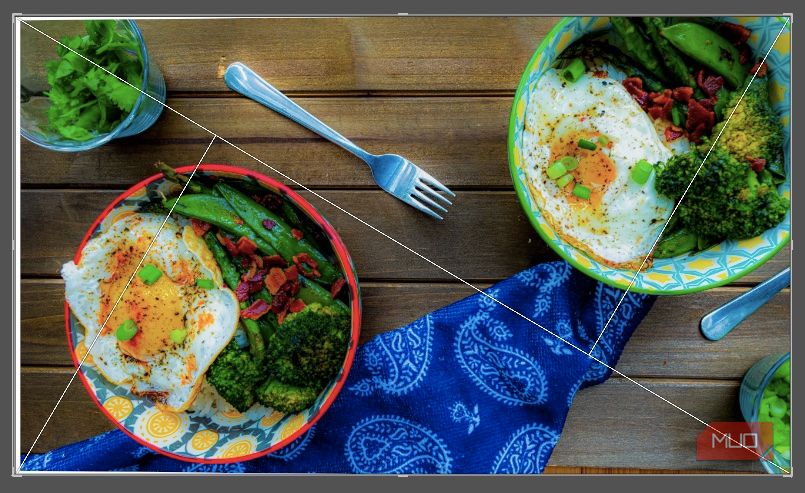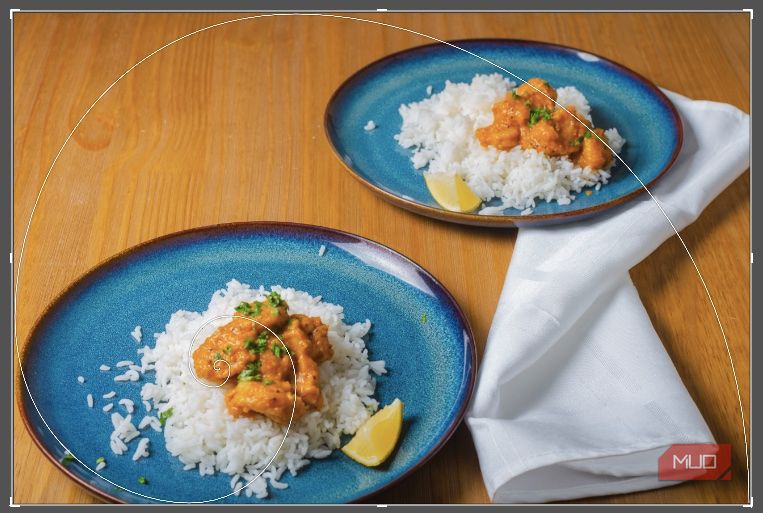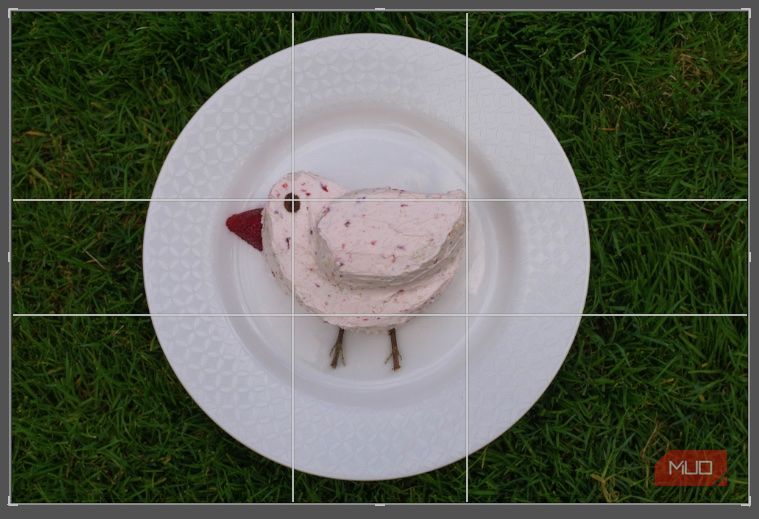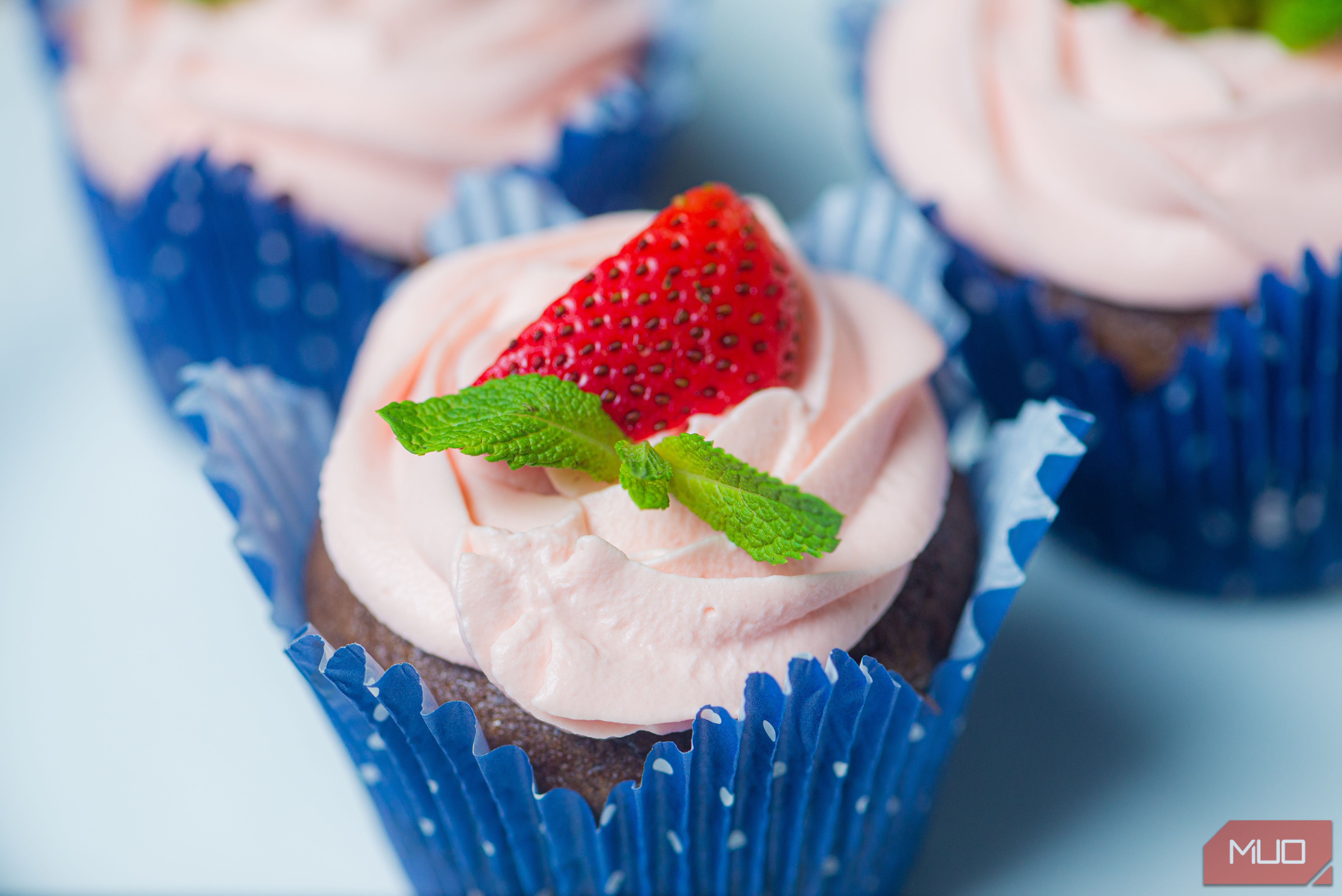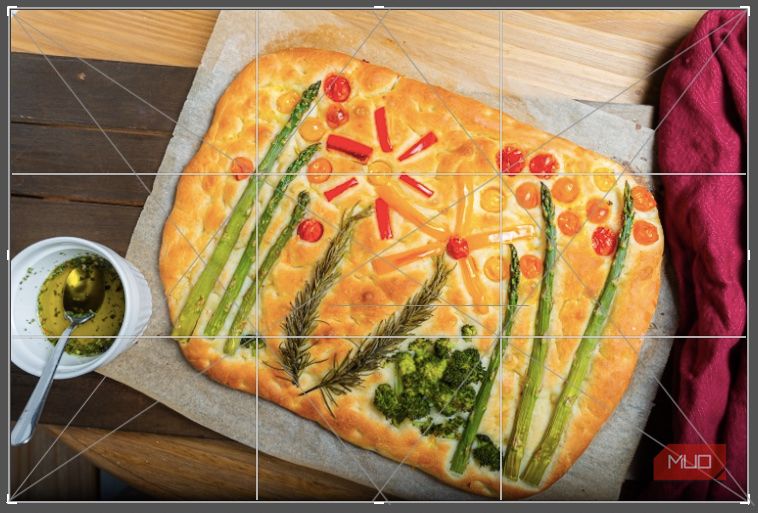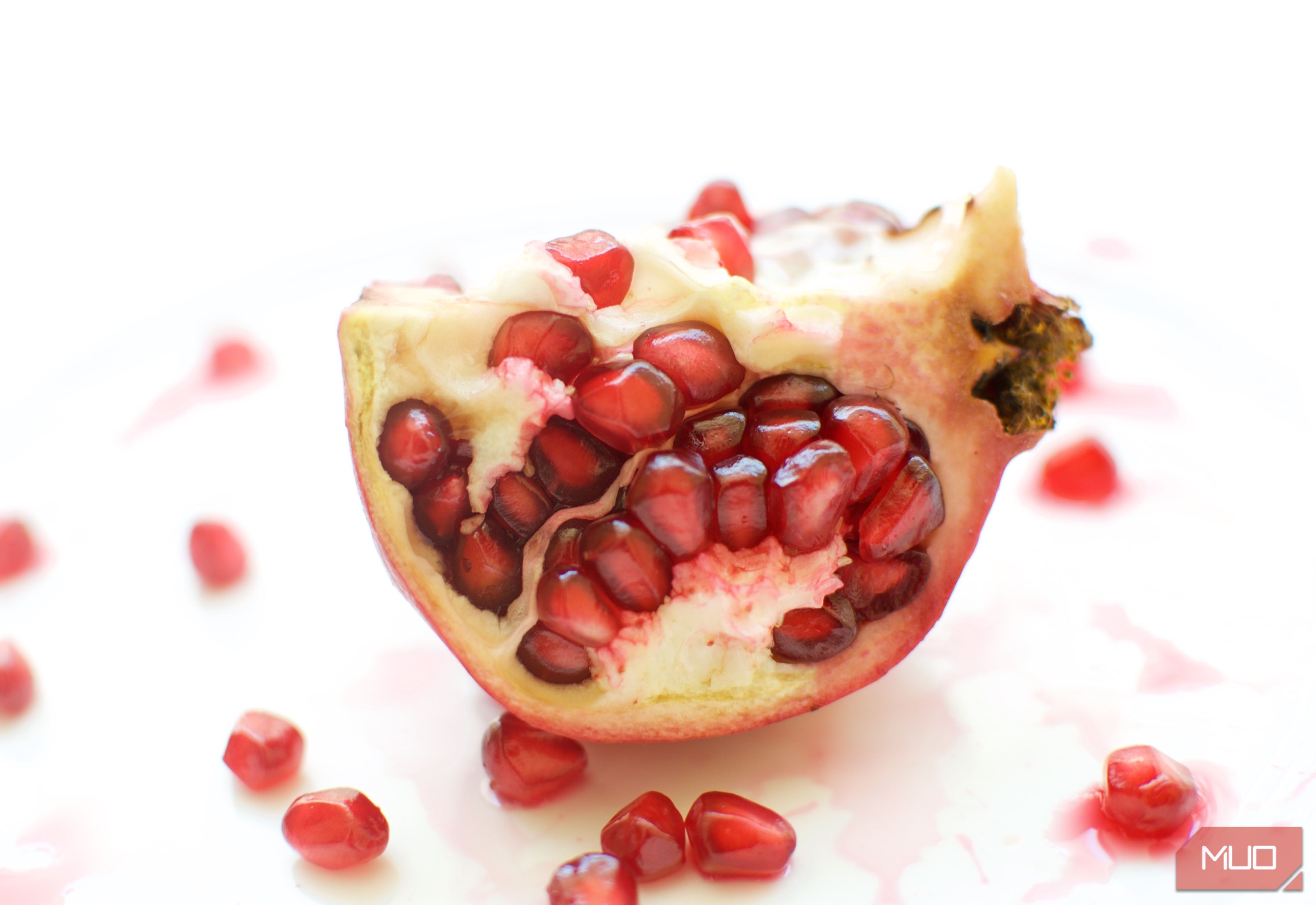Food photography is such a fun genre that almost everyone might have tried it once. Even though it is an easy genre to start with, it is pretty challenging to take food pictures that stand out. If you're taking the same close-up food shots again and again, it can become a bit boring.
Are you an enthusiastic food photographer looking to bring the wow factor to your photos? Then, look no further. We have got some great tips for perfectly composing your food photos.
1. Start With the Rule of Thirds
You may already know this straightforward tip that can instantly elevate the look of your photos. Start by dividing your frame into three sections vertically and horizontally. Then, you can place your main subject along the intersecting points for a great-looking food photo.
The rule of thirds works exceptionally well with a top-down view. You can easily implement this rule anywhere. The rule of thirds grid is available in most phones too.
2. Follow the Rule of Odds
There is something visually pleasing about placing things in groups of threes and other odd numbers. This is a handy rule to remember when you are taking pictures of desserts.
So, the next time you make cupcakes, creme brulee, or cinnamon buns, make it a point to arrange them in odd numbers before taking photos. As shown in our picture above, the rule of odds works for savory items too.
Of course, you can squeeze in two items when shooting larger plates of food. In that case, you can have one dish in complete focus with the second partially focused. Essentially, you're still following the rule of odds with only one plate in focus.
3. Add Layers to Your Composition
Layers are something that landscape photographers pay keen attention to. But layers can add depth and visual interest to any type of photography. As a food photographer, you can add layers to your images to make the photos pop rather than just look like flat images.
You can add layers in a few different ways. If you're shooting at a 45-degree angle, you can place a few elements in the front and back of your main item. When you keep your subject in focus, these accessories blur and create depth. You can also place your plated food on a larger plate or bowl to add layers while shooting at a top-down angle.
4. Try the Golden Triangle
In this rule, you separate your fame into four triangles and place your subject along the intersecting points. This rule is similar to the rule of thirds, but we use diagonal lines for segregating the frame.
First, draw a line diagonally across your frame. Then, draw two lines from the other two corners to intersect the main line at 90 degrees. Placing accessories like spoons, forks, or chopsticks along the diagonal line can make an interesting composition.
5. Aim for the Golden Ratio
The golden ratio leads your eyes in a curved line similar to a seashell. It is not the easiest of the compositional rules, but with practice, you can master it to create stunning photos.
To start with, use the general curve of the plates and bowls to follow the golden ratio. Once you get comfortable, you can apply the golden ratio with other elements in your composition.
6. Place Your Subject Along the Phi-Grid
The phi-grid is related to the golden ratio but resembles the rule of thirds. The vertical lines are rather closer together in the middle. You will find this rule refreshing if you have been using the rule of thirds extensively. The photos composed with this rule are far more captivating.
Because the lines concentrate in the center, this rule is great for showcasing individual food items.
7. Play With Color
As a beginner photographer, you may plate your food and click away. But taking some time composing your food photos can take it to the next level. First, it is essential to refresh your knowledge of the basics of color theory. Understanding it will allow you to have fun with colors.
Experimenting with different colors is key. For example, switch up the background or try various napkins to bring the image alive. Also, look for bold patterns and textures.
8. Use Shadows Creatively
If you always use diffused light to take food photos, it is time to switch it up and try something creative. Hard lighting can give your photos a different look, emphasizing the sunny, outdoorsy feeling. You can adjust the position of the light to get shadows in various sizes and at different angles.
You need an artificial light source to experiment with the effects. With natural light, you may not have that flexibility; you have to strategically shoot at different times of the day to get the result you want.
9. Compose With Dynamic Symmetry
Dynamic symmetry is the most complicated compositional rule to implement in your photos. But you can use the overlay in the initial days to get the hang of it. The rule works incredibly well with flat lays of multiple items. Use the intersecting points to place your things of interest.
Artists mainly use it to compose their artwork. As a food photographer, you have the luxury of time to set up your shots. Think of this rule as a combination of using the rule of thirds with diagonal lines. In fact, the simpler rule of thirds is derived from dynamic symmetry.
10. Don't Forget Negative Space
Using negative space is a hallmark of minimalist photos, and you can use this powerful technique to create stunning food images. It is a good idea to leave at least half of your image as negative space. Leaving enough negative space will give some breathing room for the viewer's eyes.
It is also crucial if your pictures are going on a menu or other promotional material. Your photos should have room for words, logos, and so on.
Master These Compositional Rules to Become a Confident Food Photographer
Composition is everything in food photography. Even if you're an excellent cook and your food drool-worthy, you have to hone your artistic skills to make it look delicious in photos. Refer back to this guide if you need help getting started.

